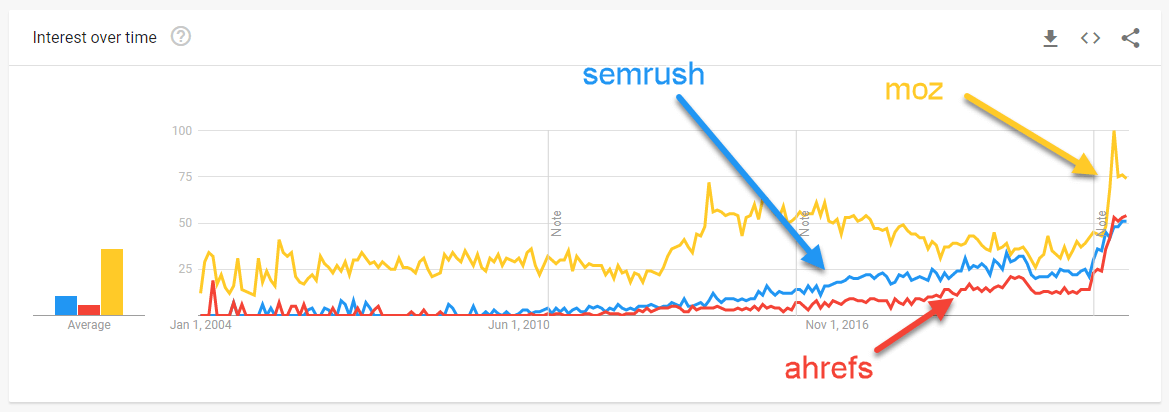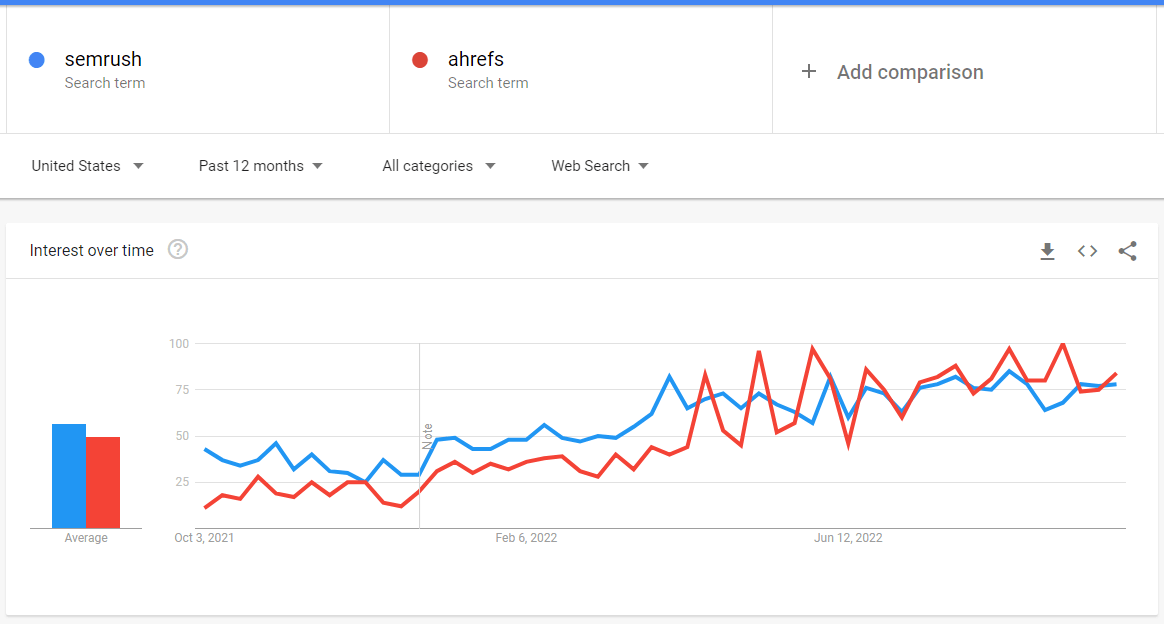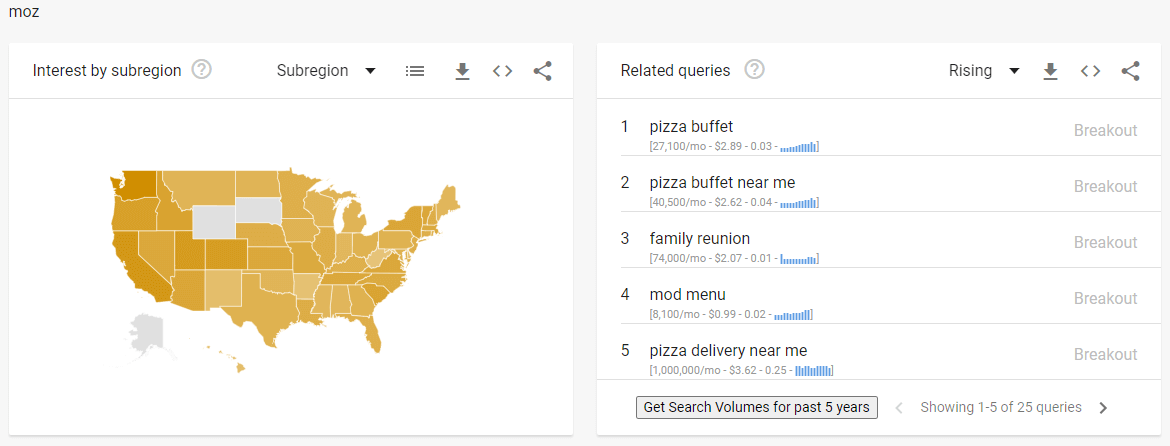What wrong data?
Here is a quick example of wrong data - semrush v/s ahrefs
Let's compare two of the top tools in SEO - Semrush (blue) and Ahrefs (red). The screenshot below is what Google Trends shows.
They seem to be very close right?

Click to see this chart on Google Trends
Wrong.
The screenshot below is how the charts should really look.

Semrush (74,000/mo) has about twice the monthly search volume compared to Ahrefs (40,500/mo) in the US.
The chart clearly shows the blue line (semrush) much higher than the red line (ahrefs)
Compare Three Entities
Now to make things interesting lets add Moz (yellow) to the mix. Here is what Google Trends shows. Moz seems to be beating the pants off the other two.

Click to see this chart on Google Trends
Wrong again.
Here is how the charts should really look. Moz has significantly lower search volume (12,100/mo) than the other two.

Why is Google Trends showing wrong data?
To understand this we need to know how Google Trends works and what purpose it serves.
How Google Trends Works
Here is an long article from 2016 by a Google data jounalist that explains how Google trends works.
And here is the two point TLDR version:
1. Google trends data is presented as an index that is normalized from 0 to 100. This helps us see the trends, and emphasizes spikes in searches compared to increase in volume of searches.
2. Google Trends was built to see the trends of keywords and to compare between trending keywords. Google Keyword Planner is the right tool for comparing actual search volumes.
Issues due to normalization
Basically, every graph that Google Trends draws is normalized to 0 and 100, where 100 is the peak in the timeframe we've requested.
So, when it shows the graphs of Ahrefs and Semrush over the last 18 years, it finds that they both peaked in Sep 2022 (current month). If the chart was drawn based purely on search volumes, then the Ahrefs spike would've seemed much smaller and the relationship between the two (if any) could've been lost.
To understand this, let's look at search volume growth for semrush and ahrefs over the last one year.
Semrush went from 60,500/mo to 74,000/mo in last 12 months, a growth of 22%.
Ahrefs went from 33,100/mo to 49,500/mo in the same time frame i.e. a growth of 49%.
Over the last 12 months Ahrefs has grown much more than Semrush, but it's total search volume is still lower than Semrush.
However, since Google Trends emphasizes the trending nature of the chart, it looks like Ahrefs has caught up with Semrush in total search volume. This is why the chart shown is so misleading.

Click to see this chart on Google Trends
We confuse Google
Now let's see why it looks like Moz has significantly more searches than Semrush & Ahrefs
To figure the reason for this issue, all you need to do is scroll down the page to view the related queries shown for "Moz"

Click to see this chart on Google Trends
Strange. Google is showing pizza related keywords for Moz.
Wait a min - is Google confusing Moz with Mozarella? If so, then this could be why there is such a huge spike for Moz.
There also is a pizza chain called "mod". Maybe misspellings for this brand are also partly to blame for this.
What's the fix?
Glad you asked!
The reason for these issues is that the charts are normalized to search interest, and do not use real search volumes.
The fix then is to simply re-draw these charts accounting for the search volume. That's exactly what Keywords Everywhere will do in the next version update (v10.22 - currently being reviewed). As you've probably guessed the screenshots we showed with the fixed data were from Keywords Everywhere

Note that the fix only applies due a duration of 7 days or more. We cannot fix the charts for shorter durations. In such cases the new chart will simply not be shown on the page.
You can also disable this feature from the settings page, in the Miscellaneous Settings section.